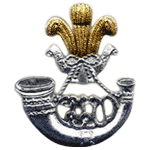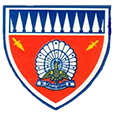Related Research Articles

Lieutenant General Denzil Lakshman Kobbekaduwa, RWP, RSP, VSV, USP was a senior Sri Lankan Army officer who served in the 1971 Insurrection and the Sri Lankan Civil War.
Major General Vanigamuni Indrajith Vijeyakumar Mendis Wimalaratne, RWP, RSP, VSV, USP, psc, GR was a senior Sri Lanka Army officer. One of the most distinguished field commanders in Sri Lanka, Wimalaratne raised the Gajaba Regiment, he commanded the 1st Brigade during the Vadamarachchi Operation, he commanded the Amphibious Task Force Commander during Operation Balavegaya and was the Commander Security Forces – Jaffna at the time of his death in a land mine explosion at Point Arali in the Kayts Island while making preparations to re-capture Jaffna.

Indian Peace Keeping Force (IPKF) was the Indian military contingent performing a peacekeeping operation in Sri Lanka between 1987 and 1990. It was formed under the mandate of the 1987 Indo-Sri Lankan Accord that aimed to end the Sri Lankan Civil War between Sri Lankan Tamil militant groups such as the Liberation Tigers of Tamil Eelam (LTTE) and the Sri Lankan military.

The Sri Lanka Army is the oldest and largest of the Sri Lanka Armed Forces. Established as the Ceylon Army in 1949, it was renamed when Sri Lanka became a republic in 1972. In 2010, the Army had approximately 200,000 regular personnel, between 20,000 and 40,000 reserve (volunteer) personnel and 18,000 National Guardsmen and comprises 13 divisions, one air-mobile brigade, one commando brigade, one special forces brigade, one independent armored brigade, three mechanized infantry brigades and over 40 infantry brigades.
""Operation Pawan- The Battle for Jaffna"".

The Sri Lanka Armoured Corps (SLAC) provides the armour capability of the Sri Lanka Army, with vehicles such as the T-55AM2, and type 80/88 main battle tanks; the BMP infantry fighting vehicle; and the BTR-80, and WZ551 armoured personnel carriers. It comprises six regular armoured regiments, a volunteer regiment, and a regimental band. It has an independent Armoured Brigade and is headquartered at Rock House Army Camp, Colombo.

The Sri Lanka Artillery (SLA) is the artillery arm of the Sri Lanka Army. It is made up of ten regular regiments and two volunteer regiments. The SLA is headquartered at Panagoda Cantonment, Panagoda.

The Sri Lanka Light Infantry (SLLI) is the oldest regiment in the Sri Lanka Army and the oldest infantry regiment in the army. It is made up of ten regular battalions and five volunteer battalions, and is headquartered at the Panagoda Cantonment, Panagoda. Over the years it has become the most distinguished and dependable regiment in the army.

The Sri Lanka Sinha Regiment (SLSR) is an infantry regiment of the Sri Lanka Army; it is the second oldest infantry regiment in the army. It is made up of seven regular battalions, five volunteer battalions and a headquarters battalion at the Ambepussa Camp.

The Gajaba Regiment (GR) is an elite infantry regiment of the Sri Lankan Army. Formed on 14 October 1983 at the Saliyapura Camp in Anuradhapura, it is named after the famous Sinhalese King Gajabahu the First. It consists of 14 regular battalions and 6 volunteer battalions.

The Gemunu Watch (GW) ("King Dutugemunu's Own") is a infantry regiment of the Sri Lanka Army, formed with troops from the Ceylon Light Infantry and the Ceylon Sinha Regiment in 1962. It has been deployed in many major operations against the LTTE. It is made up of 14 regular units and 9 volunteer units. Headquartered at Kuruwita Army Camp, Ratnapura. It is named after one of the most famous Lankan Kings, King Dutugemunu.
Operation Riviresa, was a combined military operation launched by the Sri Lankan Armed Forces in Jaffna. Starting on 17 October 1995, the primary objective of the operation was the capture of the city of Jaffna and rest of the Jaffna peninsula from the LTTE. It is believed that Operation Riviresa was the largest and most successful military operation in Sri Lankan Armed Forces during the Third Eelam War.

General Tissa Indraka Weeratunga, VSV was a Sri Lankan senior army officer. He was a former Commander of the Sri Lankan Army and first general officer commanding (GOC) of the Joint Operations Headquarters (JOH), he was later Sri Lanka's High Commissioner to Canada.

The Jeyanthan Brigade was an elite infantry formation of the LTTE. It was founded on 3 May 1993 and was initially trained under the leadership of Colonel Karuna Amman. It was the second oldest and most feared infantry unit of the Tamil Tigers. According to LTTE leader Velupillai Prabhakaran, the Sri Lanka Armed Forces feared the Jeyanthan Brigade the most and sought to avoid direct clashes with them. The soldiers in the unit all hailed from villages in the Eastern Province. Unlike the Charles Anthony Brigade which was only deployed in the North, the Jeyanthan Brigade was deployed in the East as well as the North and played an important role during Second Battle of Elephant Pass. The regiment was named after the LTTE's first Eastern Sea Black Tiger, Captain Jeyanthan, who destroyed a Sri Lankan Naval Patrol Vessel off the coast of Point Pedro on 4 May 1991. Prabhakaran inaugurated the unit on the 2nd death anniversary of Captain Jeyanthan in 1993.
General Shavendra Silva, WWV, RWP, RSP, VSV, USP is a Sri Lanka Army officer. He is the Chief of Defence Staff and former Commander of the Sri Lanka Army, His prior appointments include, Chief of Staff of the army, Adjutant General and Director of Operations of the Army. During the Sri Lankan civil war he gained fame as the General Officer Commanding of the elite 58 Division. He had also served as the Deputy Permanent Representative to the United Nations Headquarters.
Divisions of the Liberation Tigers of Tamil Eelam refers to the military, intelligence and overseas divisions the Liberation Tigers of Tamil Eelam (LTTE). Most of these divisions were destroyed during the Eelam War IV, and only parts of the intelligence and financing divisions remain overseas.
General G. D. H. Kamal Gunaratne, WWV, RWP, RSP, USP is a retired Sri Lankan military officer. He is the Secretary to the Ministry of Defence and the State Ministry of National Security and Disaster Management. A retired career officer of the Sri Lanka Army, Gunaratne had served as the former Commander Security Forces Headquarters - Wanni, General Officer Commanding (GOC), 53 Division and was a former Deputy Ambassador to Brazil. He was the GOC of the 53 Division which killed the LTTE leader Velupillai Prabhakaran at Nandikadal, Mullaitivu.
Major General Priyanka Fernando, RWP, USP, is a former senior Sri Lanka Army officer. He has served as the Director General of General Staff (DGGS); General officer commanding (GOC), 58 Division; Commandant of the Ranaviru (veterans) Resource Centre; Director of Rehabilitation; and the Director of Real Estate and Quartering. He served as the Colonel of the Regiment of the Mechanized Infantry Regiment and was the Sri Lankan Minister Counsellor (Defence) in London.
The Battle of Weli Oya, was a battle between the militant Liberation Tigers of Tamil Eelam and the Sri Lanka Army during the Sri Lankan Civil War for control of the military bases in Weli Oya in northern Sri Lanka on 28 July 1995.

The 54th Infantry Division is an Infantry division of the Indian Army. The Division was raised as an Infantry Division, but was converted into a Reorganised Amphibious Formation (RAMFOR) in 2011. It is currently the only division of the Indian Army which carries out Amphibious warfare. The division is headquartered at Secunderabad in Telangana and is a part of XXI Corps. The Division is commanded by a Two-star General Officer of the rank of Major General titled General Officer Commanding (GOC).
References
- ↑ "Army at doorstep of last Tiger stronghold". Archived from the original on 2009-05-16. Retrieved 2009-06-09.
- ↑ "Air Mobile Brigade: For the Nation's Dazzling Future". Daily News. Retrieved 8 October 2021.